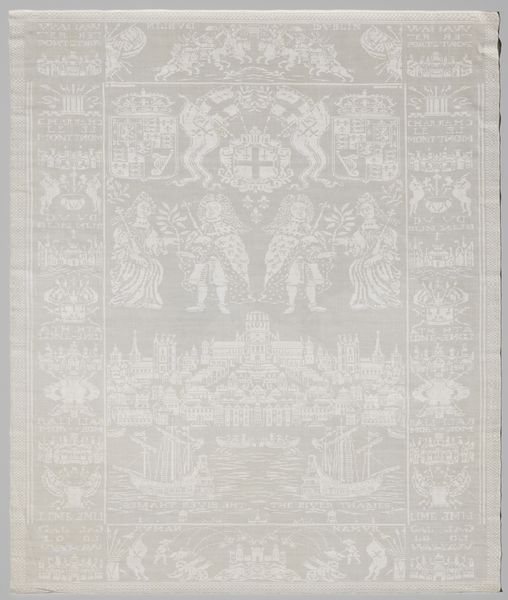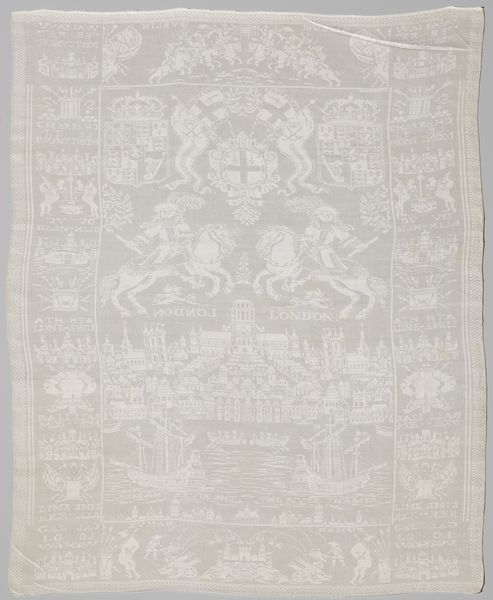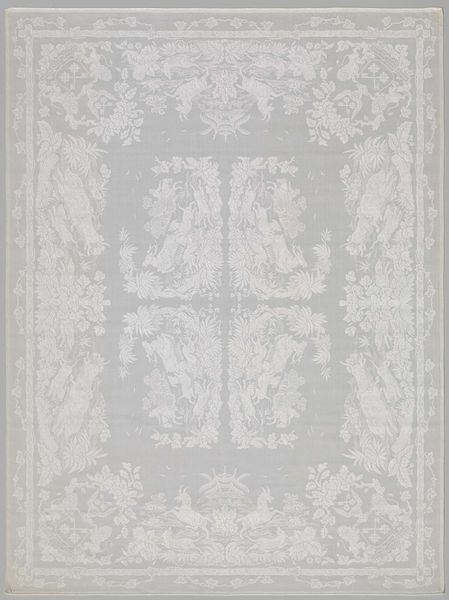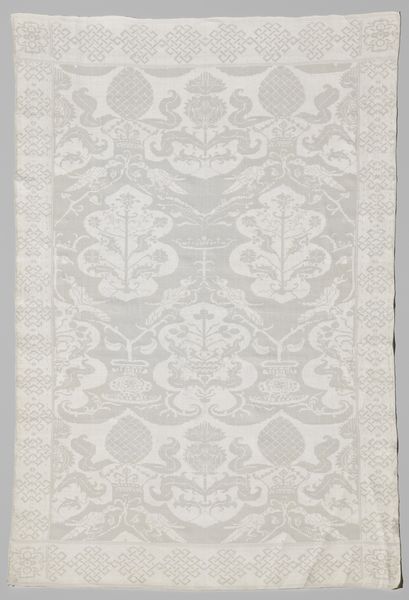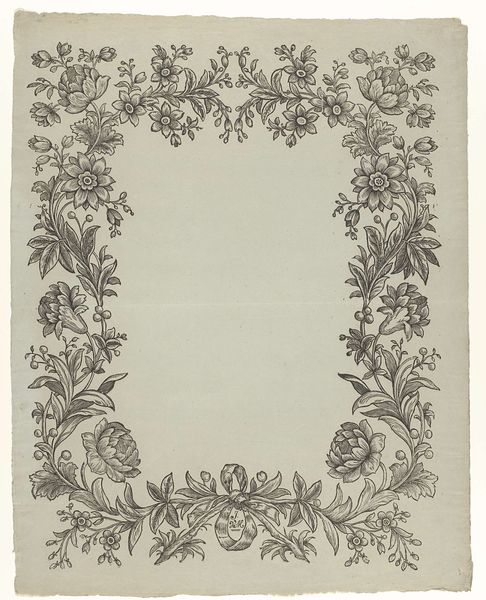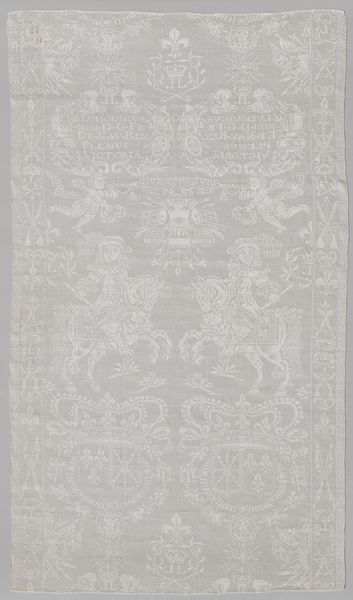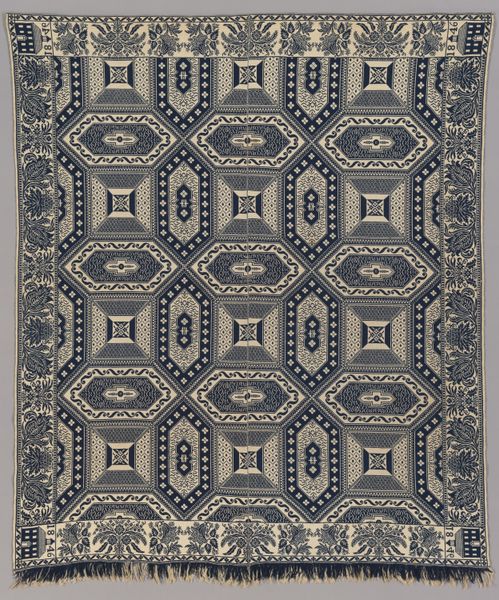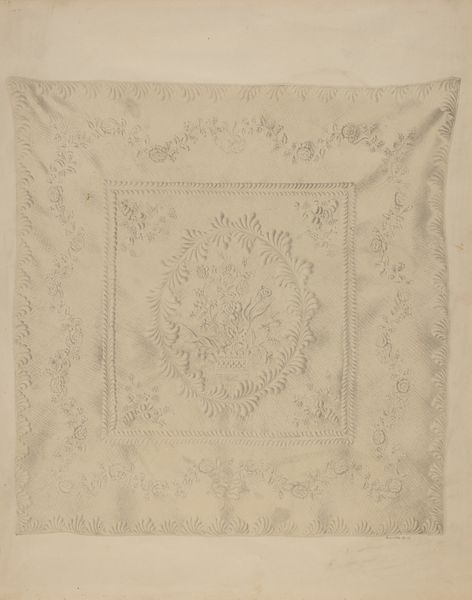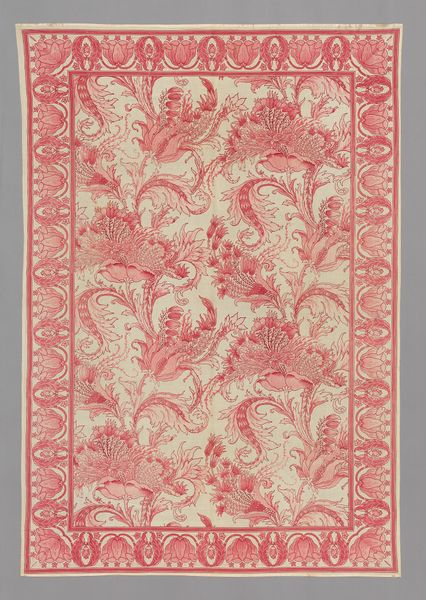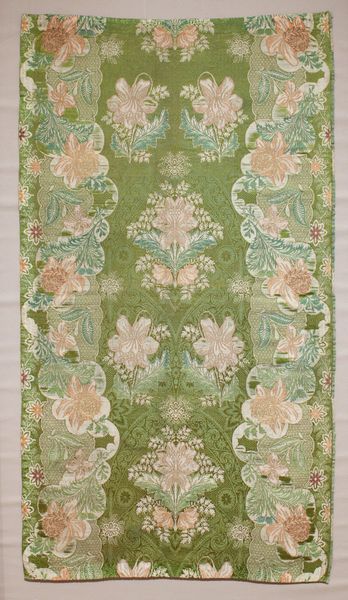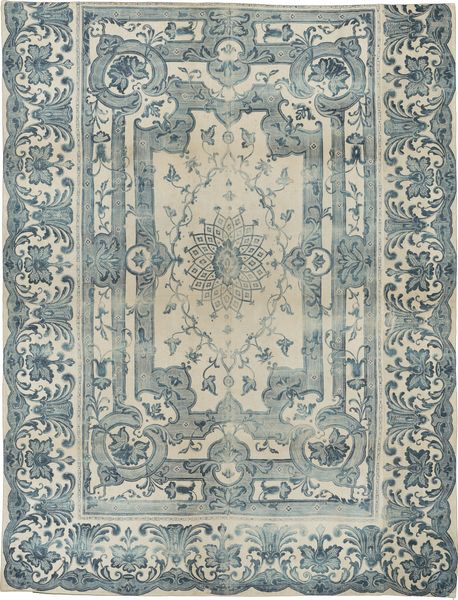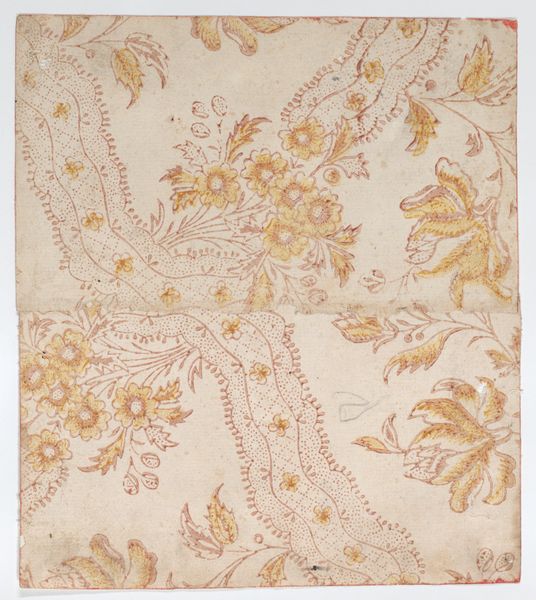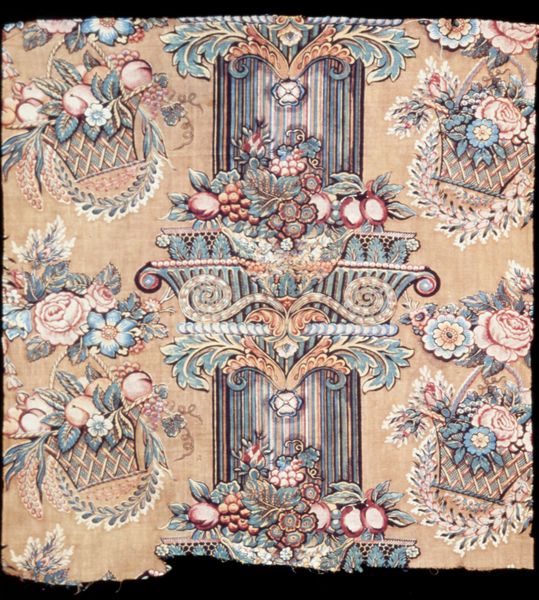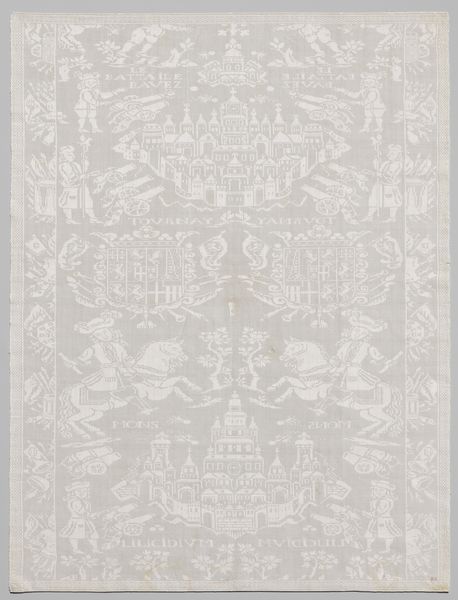
Servet van wit linnendamast, bloementakken en rococo-ornament, tweemaal het gekroonde wapen Kops en tweemaal het spiegelmonogram NWK, in het hart ANNO 1746 1746
0:00
0:00
weaving, textile
#
baroque
#
weaving
#
textile
#
decorative-art
Dimensions: height 122.5 cm, width 89 cm
Copyright: Rijks Museum: Open Domain
Editor: So this is "Servet van wit linnendamast," made anonymously in 1746. It's a linen damask napkin with woven floral designs, rococo ornaments, coats of arms and monograms. It feels very formal, like something made for a specific occasion, but the monochrome keeps it subtle. What strikes you about it? Curator: What jumps out at me is the labour embedded in this object. Think about the entire process. From flax cultivation, through spinning the linen thread, designing the pattern, setting up the loom, and finally, the incredibly skilled and time-consuming weaving. This isn’t just decoration; it's a testament to craft production. Consider also that the ornate design is not merely aesthetic but a signal of status for its commissioner. The coats of arms represent specific lineages. Editor: That’s a great point – I hadn’t considered the sheer effort. How does it challenge our ideas about fine art versus craft? Curator: This piece collapses that hierarchy. We typically associate "fine art" with painting or sculpture, but this napkin displays equal mastery, artistic vision and intention. More importantly, we should question why these textiles – usually women's work– have been historically relegated to the realm of craft. Its beauty and complexity is born directly from its utility. It suggests complex dynamics within the household it was made for. Who would have been using it? And what would they have been eating? The context for which it was designed would also give it additional context. Editor: So, it becomes less about decoration and more about the socioeconomic context of the 18th century? Curator: Exactly. This napkin encapsulates labor, status, and a fascinating dialogue about how we define and value artistic practices. What an insight! Editor: It is interesting how understanding the process adds layers to the initial impression. Thanks for shedding some light on the complexities beyond the surface!
Comments
No comments
Be the first to comment and join the conversation on the ultimate creative platform.
